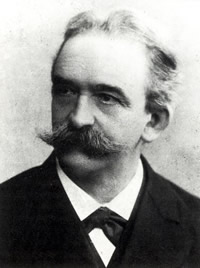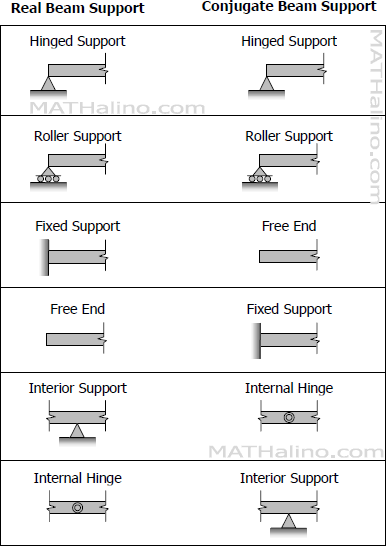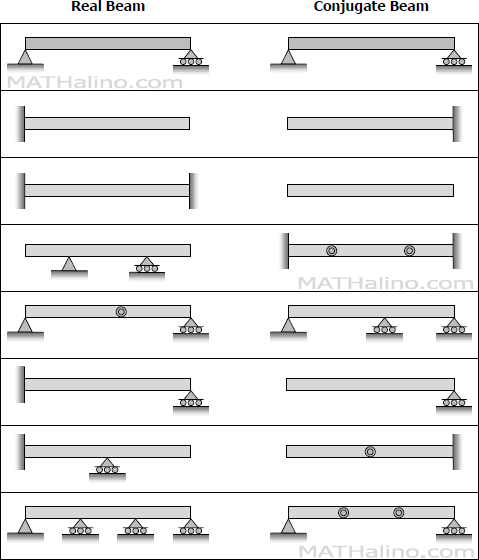Conjugate Beam Method | Beam Deflection
Slope on real beam = Shear on conjugate beam
Deflection on real beam = Moment on conjugate beam
Deflection on real beam = Moment on conjugate beam
Properties of Conjugate Beam

Engr. Christian Otto Mohr
- The length of a conjugate beam is always equal to the length of the actual beam.
- The load on the conjugate beam is the M/EI diagram of the loads on the actual beam.
- A simple support for the real beam remains simple support for the conjugate beam.
- A fixed end for the real beam becomes free end for the conjugate beam.
- The point of zero shear for the conjugate beam corresponds to a point of zero slope for the real beam.
- The point of maximum moment for the conjugate beam corresponds to a point of maximum deflection for the real beam.
Supports of Conjugate Beam
Knowing that the slope on the real beam is equal to the shear on conjugate beam and the deflection on real beam is equal to the moment on conjugate beam, the shear and bending moment at any point on the conjugate beam must be consistent with the slope and deflection at that point of the real beam. Take for example a real beam with fixed support; at the point of fixed support there is neither slope nor deflection, thus, the shear and moment of the corresponding conjugate beam at that point must be zero. Therefore, the conjugate of fixed support is free end.

Examples of Beam and its Conjugate
The following are some examples of beams and its conjugate. Loadings are omitted.

- Log in to post comments
